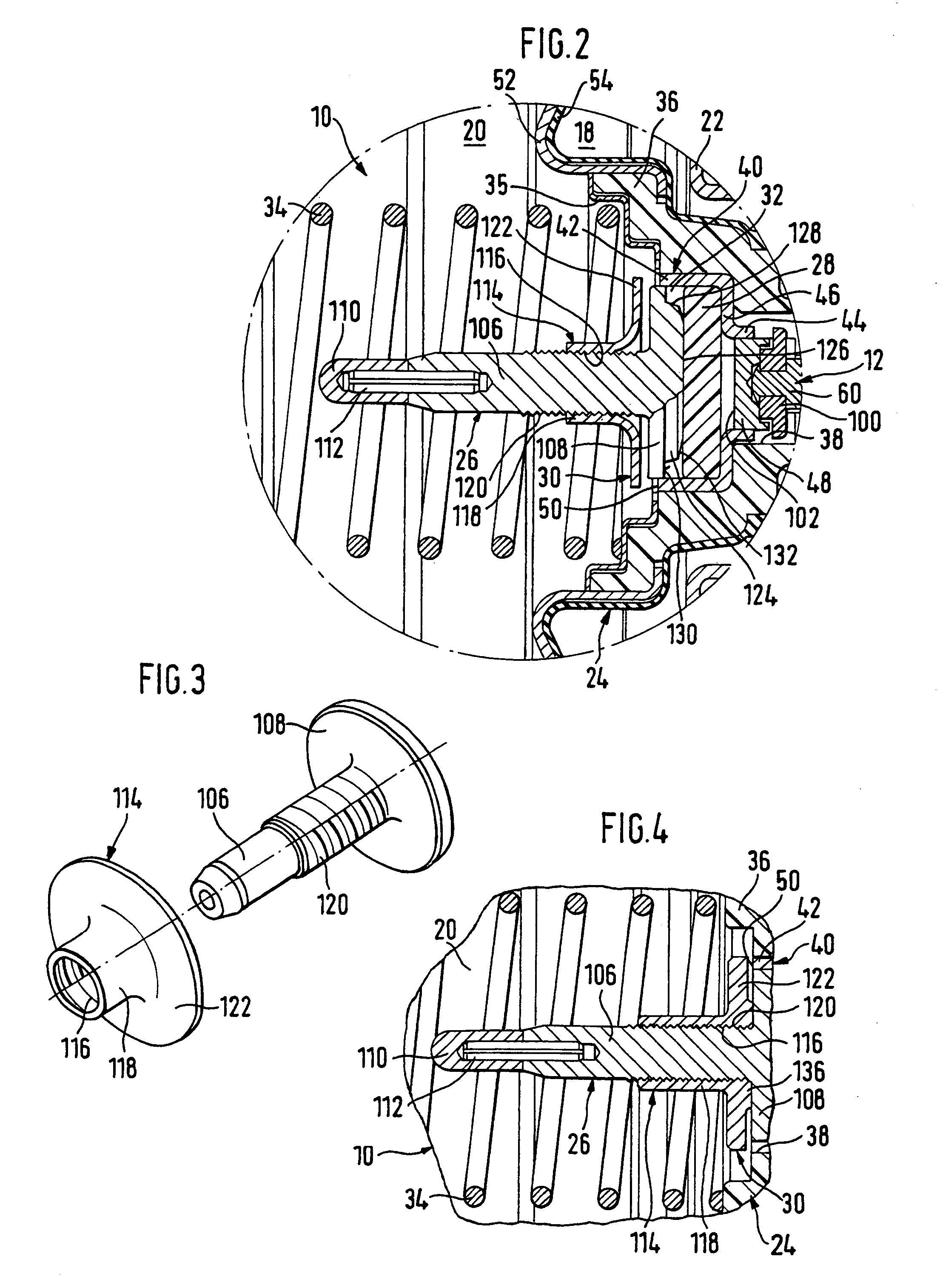Vacuum servo brake for a booster brake system for motor vehicles
a technology of vacuum servo brake and booster brake, which is applied in the direction of servomotors, mechanical devices, fluid-pressure actuators, etc., can solve the problems of reducing the hysteresis of dual rate characteristics, reducing the maximum available booster support, and affecting the performance of the reaction member. , the effect of reducing the friction coefficien
- Summary
- Abstract
- Description
- Claims
- Application Information
AI Technical Summary
Benefits of technology
Problems solved by technology
Method used
Image
Examples
Embodiment Construction
[0039]At this point it should first of all also be noted in connection with the drawings that all the rubber-like elastic components of the vacuum servo brakes shown have been illustrated in the undeformed condition, to simplify the illustration.
[0040]FIG. 1 shows a vacuum servo brake 10 with no response travel, of a booster brake system for motor vehicles, which may be connected on its left-hand side as seen in FIG. 1, that is to say on the output side, to a main cylinder in a serial or tandem arrangement and on its right-hand side as seen in FIG. 1, that is to say on the input side, to a brake pedal. The main cylinder, which is connected to the wheel brake cylinders in conventional manner, and the brake pedal are constructed as known in the prior art and are not illustrated in the figures, for reasons of clarity. The vacuum servo brake 10 itself is only shown to the extent that appears necessary to understand the present invention.
[0041]The vacuum servo brake 10 has as the input m...
PUM
 Login to View More
Login to View More Abstract
Description
Claims
Application Information
 Login to View More
Login to View More - R&D
- Intellectual Property
- Life Sciences
- Materials
- Tech Scout
- Unparalleled Data Quality
- Higher Quality Content
- 60% Fewer Hallucinations
Browse by: Latest US Patents, China's latest patents, Technical Efficacy Thesaurus, Application Domain, Technology Topic, Popular Technical Reports.
© 2025 PatSnap. All rights reserved.Legal|Privacy policy|Modern Slavery Act Transparency Statement|Sitemap|About US| Contact US: help@patsnap.com



